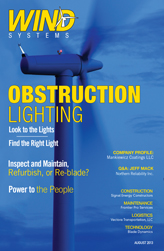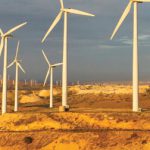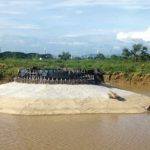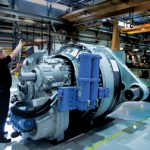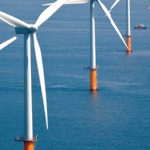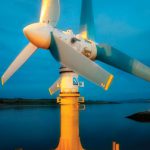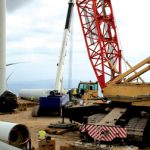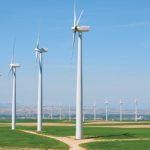In early 50 years ago, Bob Dylan sang that “you don’t need a weatherman to know which way the wind blows.” Dylan certainly wasn’t referring to the wind energy industry in 2013, but his commentary is surprisingly applicable: Surrounding every wind turbine are political factors that cannot be measured by instrumentation alone.
The things that affect whether a wind project is sited—or not—require more than sound science and excellent engineering. Reaching a favorable outcome means understanding and thriving in the local political climate by mitigating threats and influencing key decision-makers.
Power projects are inherently political, and without identifying the pitfalls on the path to permitting, consolidating support, and neutralizing opposition, even the best-planned efforts may be left twisting in the wind. What follows is an in-depth look at how to properly navigate the obstacles on your landscape so that the permitting process may go according to plan.
Gauge the Atmosphere
When it comes to a wind project, the landscape is more than just the local geography. It encompasses all of the facts on the ground, including the people and their politics. No two sites are the same, so understanding the configuration of the surrounding community—and the why and where of potentially vociferous opposition—can prevent a project from slipping off the path to approval. Indeed, when projects fall through, it is often because preliminary steps were skipped or avoidable mistakes were made.
When it comes to wind developments, scientific assessments determine the project’s internal viability. But the permitting process is not governed by science; rather, obtaining approval is more of an art. The path to success requires appropriate attention paid to external factors.
Investors in any business, whether a restaurant or shoe store, should expect a detailed market research study. That’s because good market research is predictive: It provides backers with a reliable forecast by giving due consideration to the external factors that influence the project. While wind power doesn’t operate like a retail outlet, understanding these external factors is just as valuable. This is why every wind project needs a political due diligence assessment.
Get a Good Barometer
A proper due diligence report answers critical questions that can determine a project’s likelihood of a favorable outcome. First, it examines the procedural landscape. This includes a holistic evaluation of where the battles may be fought, be they at the regional level—planning commissions, economic development committees, and zoning boards, for example—or inside local bodies like county commissions and city councils. The assessment envisions scenarios at each level of approval, paying particular heed to procedural matters. What are the guidelines for public hearings and citizen input? How does a resolution make it to the agenda? How many readings does the motion require? How many votes are needed for it to pass?
While these boards and committees hold power as a collective, they are comprised of individuals. Determining who is for or against the turbine project is only the starting point. Who are the personalities that will decide on the legislation? What motivates them and where do their allegiances lie? When are the next elections? Is the swing vote a businessman or a bureaucrat, a political neophyte or veteran decision-maker? How does this official respond to public pressure and his constituents? To learn this make-or-break information, profiles of the lawmakers in question must be created, looking to previous votes and statements on similar issues to fully elucidate their tendencies on wind energy or renewable power.
Identifying stakeholders does not stop at the policy level. The other influencers in a community—the heads of social organizations, civic groups, and local businesses—should be mapped out and their motivations and goals clearly understood. This cadre of community-minded individuals will be essential for building support for wind—or, at the very least, knowing who to keep on the sidelines. Seeking these opinion leaders prior to the permitting process can allow a wind farm developer to have key allies in hand.
Doing the appropriate due diligence is about the proverbial “ounce of prevention”—it facilitates smarter investments. As plans go off-course, they rack up high incidental costs. Imagine the damage to a developer’s bottom line stemming from unanticipated legal fees (for fending off community-based challenges), hiring experts, and even the need to make additional land acquisitions. Then multiply those expenses by the months and years of delays as the unsettled issues stumble toward resolution. These difficult scenarios can often be avoided by simply structuring the project with the most favorable political circumstances in mind. A good political due diligence assessment can save a company untold time and money by identifying the most advantageous path to permitting.
There’s No Flying Under the Radar
Determining who is negatively affected by the project—and who is most likely to transform their disapproval into vocal opposition—is often a simple matter of geography. The wind farm’s neighbors, whether they live in the shadow of the turbines or travel daily on impacted roads, are the most obvious source of hostility. They often form the core of the “Not In My Backyard” (or NIMBY) crowd that has rankled developers of projects big and small for years.
These citizens abutting the project need to be engaged from the beginning—even before feasibility is being studied—if possible. Knocking on doors in the neighborhood, listening to concerns, and identifying opponents and supporters is an important step as the permitting process begins to take shape. It may seem naive that by simply engaging residents early on, many of the potential land-mines can be defused safely—but in fact, experience shows this is the case. In-depth conversations with abutters also serve as an informal focus group, helping proponents can understand community dynamics and honing the pro-wind message accordingly. Determining which arguments—and which words—are most effective for communicating wind power’s benefits is instrumental in educating the public.
Of course, not everything will be copacetic even after the most dedicated neighbor-to-neighbor outreach. Opposing groups may be campaigning to draw attention to their cause, utilizing a combination of fliers, blog posts, letters to the editor, public meetings, rallies, and demonstrations. To address these community concerns, wind developers are known for holding town hall-style meetings in a single, centralized forum. While this approach can be well received, it opens up the possibility of a wind project’s worst nightmare—the angry mob.
A more effective approach may be a “community walk-through,” an open house-style event with small stations for engineers, developers, local officials and company employees. At a walk-through, each group of stakeholders can discuss the wind project with ordinary residents and local press. Community members will feel listened to—and the threat of a public spectacle is significantly reduced.
Meanwhile, skeptical or antagonistic public officials will have their own pulpit. It is easy for local politicians to throw in their lot with the opposition crowd; when they see an angry group of constituents, they understand the threat to re-election. More than that, however, ambitious political leaders see an emotional base of voters and seek to capitalize on their energy for the next election (and beyond). The question is, then: Who is willing to speak in favor of the wind project? Who is willing to lead the pro side and explain the benefits? Who is willing to create political cover so elected officials can support economic development and feel secure in their jobs?
This is where the dividends paid from the political due diligence assessment will be most visible. While opponents and decision-makers will be in plain view, finding a local leader to carry the torch for the project is a painstaking but important portion of the process. Often, it starts with looking at a map of the affected area and knocking on doors in the neighborhood. The invaluable nature of face-to-face interaction creates an immediate bond, and provides a launching point for developing supporters into flag-carrying leaders. This is an underrated aspect of siting a project from the grassroots: cultivating proponents early and empowering them to organize and lead.
Cause Forces to Shift
With a group of local proponents leading the way, the critical weeks and months leading up to ‘the big vote’ should be fought like a political campaign. Those managing the campaign must help their citizen leaders educate on the issue and make a lot of noise in the process. Just like a race between two candidates, local issues—like job creation, future tax revenue, funding for schools, or infrastructure improvements—must play prominent roles.
Informing and persuading should follow the tactics of a targeted media offensive. Focusing on the key players, this stage entails spreading hyper-local pro-wind messages through meetings with editorial boards, columnists, community activists, and representatives from business and trade organizations. Mobilizing pro-wind citizens and redoubling their grassroots efforts—canvassing neighborhoods on foot and by telephone—is essential.
Advertising via mail, print and broadcast media can be enormously effective at drawing attention to the campaign’s messages and should be utilized as appropriate. A site-fight also relies heavily on person-to-person communication; use of social media platforms like Facebook and Twitter, as well as blogs and YouTube videos are all vital for demonstrating broad citizen support. Similarly, a good website acts as a clearinghouse for proponents, media and information-seekers alike.
Increase the Pressure
Where the political campaign analogy diverges from an election for mayor, for example, is that ordinary citizens do not decide—and the ballot is not secret. Instead, the people that stand between a wind investor and project approval are a small group of local officials. Their vote will forever be part of the public record. Many local decision-makers understand the benefits of inviting wind energy into their community, but are faced with the pressures of elected office.
Imagine a throng of irate NIMBYs showing up to a county commission meeting, with no one there to voice support for the project. The commissioners might reasonably fear what a ‘yes’ vote could mean for their political careers. This is why a strong pro-wind citizen group is so critical—they provide decision-makers with the reassurance and political cover to permit the project.
Every community has its pressure points. If its schools are dealing with budget cuts, tax revenues from wind power generation can plug that hole. If area infrastructure is deteriorating, permitting wind turbines can provide the catalyst to fund improved roads and bridges. If crop yields are low, or families’ farms are in trouble, leases can help farmers stay afloat. If police officers and firefighters are facing layoffs, a municipal host agreement could keep those essential services properly funded. Understanding these sensitive issues—and communicating to citizens and public officials how wind energy can solve them—is essential in shaping the outcome. No political leader would like to be known as the person who voted against restoring school budgets or keeping local farms in business.
Even at the smallest scale, the benefits of wind farms must be visible. If a little league team needs uniforms or a river needs a clean-up, donations and a civic-minded approach will help local officials and residents understand the value of siting wind in their community. The challenge is in identifying these community priorities and educating residents on their importance to the area’s ongoing debate about wind farms.
Conclusion—Always Have the Wind at Your Back
For many wind developers, it’s a terrifying thought: The difference between a project that receives approval and one that withers away can have nothing to do with investors, engineering, or environmental impact. Instead, the gatekeepers are a small group of people—sometimes well-versed in wind power, sometimes not—who need a reason to issue a permit. It starts with planning and assessment, then the painstaking work of coalition building, followed by strategic communication and public education. Properly executed, the project can sail through, applying pressure to ambivalent decision-makers and giving political cover to those officials who need it.
In other words—and with sincerest apologies to Bob Dylan—wind developers in 2013 must understand that you can’t solely use a met tower to know which way the wind blows.



















